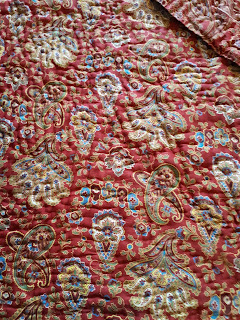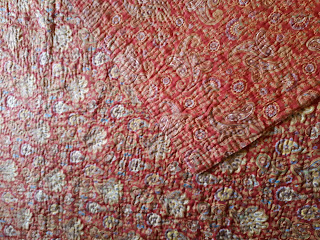Here is another stamped (marked) North Country whole cloth. The patterns are not as elaborate as some.
The corner motif has long, curving feathers...
The swags are topped with small flowers, a later motif.
The reverse of the quilt is a pink sateen.
These quilts were marked by quilt designers. The early ones can be very elaborate, but the later ones become rather simplified. Post war, some of the quilts are very poorly marked and have very simple and sometimes clumsy designs.
The colours are much nicer than they appear in these photos - the quilt size is 79 x 90". As you may know, earlier quilts tend to be square whereas later quilts (post 1930s) are rectangular as the beds changed size and were standardised at about that time.










































